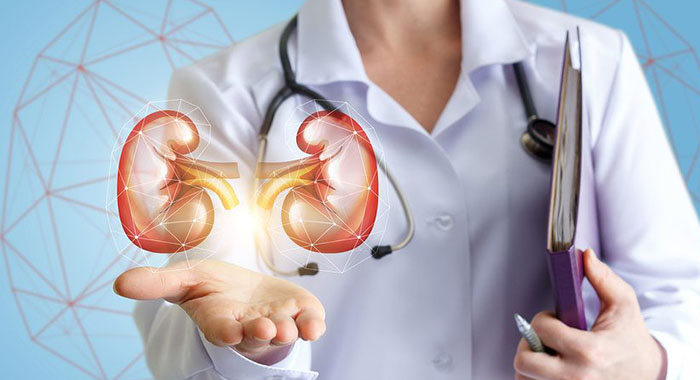
1 Why should the chronic renal insufficiency supplement high-quality protein?
A high-quality, low-protein diet is one of the important treatments for patients with chronic renal insufficiency.
The human body’s amino acids are divided into essential amino acids and non-essential amino acids. Essential amino acids cannot be synthesized by themselves and need to be supplemented by diet.
In the case of chronic renal insufficiency, the total amount of essential amino acids in the human body is reduced in the case of a low-protein diet. In order to improve the nutritional status, it is necessary to supplement essential amino acids and add a certain amount of non-essential amino acids to synthesize proteins.
Similarly, in the case of low-protein diets, high-quality protein such as animal proteins containing essential amino acids should be taken in, ie, a high-quality, low-protein diet. A low-protein diet can reduce the production and accumulation of protein catabolism waste, reduce the high-load work of the residual nephron, and delay the progression of renal insufficiency.
2 What is quality protein?
Patients with renal insufficiency promoted a good low-protein diet. The proteins that humans eat are divided into animal proteins such as eggs, fish, meat and dairy products according to their sources, and vegetable proteins such as cereals and vegetables.
The so-called high-quality protein refers to the complete range of essential amino acids contained in food, the proportion of which is close to the human body, and is easily used by the human body, such as eggs, milk, meat, fish, and soybeans. In the selection, we must pay attention to low-purine, low-phosphorus, low-fat, to avoid increased blood uric acid, blood phosphorus, blood lipids. Instead of high-quality protein, it means that the essential amino acids in food are small and incomplete, and they cannot meet the needs of the human body, or cannot be used by the human body, such as rice, noodles, fruits, vegetables and other foods.
3 What is a low-protein diet?
Low-protein diet means that the intake of protein in the diet is controlled within a certain range, that is, eat less fish and meat, eat less purine foods, and eat less high-phosphorus foods. Remember, a low-protein diet is not vegetarian!
The normal protein diet consumes 1.16g/(kg.d) of protein per kilogram of body weight per day. For example, if the body weight is 60kg, then the daily protein intake is about 69g. A low-protein diet refers to 0.8 grams of protein per kilogram of body weight per day. For example, if the body weight is 60 kilograms, the daily protein intake should be 48 grams.
4 Chronic kidney disease protein intake should be how much?
Phase I: Proteins can be taken in like normal people;
The second period: you can take protein like normal people;
Phase III: Recommended protein intake 0.8-1.0g/(kg.d);
Phase 4: Recommended protein intake 0.8g / (kg.d);
Phase 5 has not been dialysis: daily protein intake 0.8 g/(kg.d);
The fifth phase has been dialysis: daily protein intake 1.0 to 1.2 g/(kg.d).
5 Dietary protein is not the lower the better?
The lower protein diet is not as good as possible, but should be based on the status of the kidney and the actual condition of the patient. Too low a protein diet can cause malnutrition to the patient, reduce systemic resistance, and prone to complications, which can lead to deterioration of renal function. The index to be evaluated is serum albumin, preferably 40 g/L, and not less than 35 g/L.
6 How to prevent malnutrition when low protein diet?
1. The low-protein diet is not unrestrainedly low, and it is generally necessary to ensure that 0.8 grams of protein per kilogram of body weight per day.
2. About 60% of the protein in the low protein diet comes from animal protein.
3. Must ensure that intake of sufficient calories, to ensure the daily intake of 35 kcal per kilogram of body weight. Only by providing adequate heat supply can the protein be fully utilized.
4. The source of calories is vegetable oil based on carbohydrates and monounsaturated fatty acids.
5. Add compound alpha-keto acid in a low-protein diet. This is an amino acid precursor that does not contain nitrogen and binds nitrogen to produce essential amino acids.
6. Every 3 to 6 months need to re-evaluate renal function and nutritional status to adjust diet.
Leave a Reply